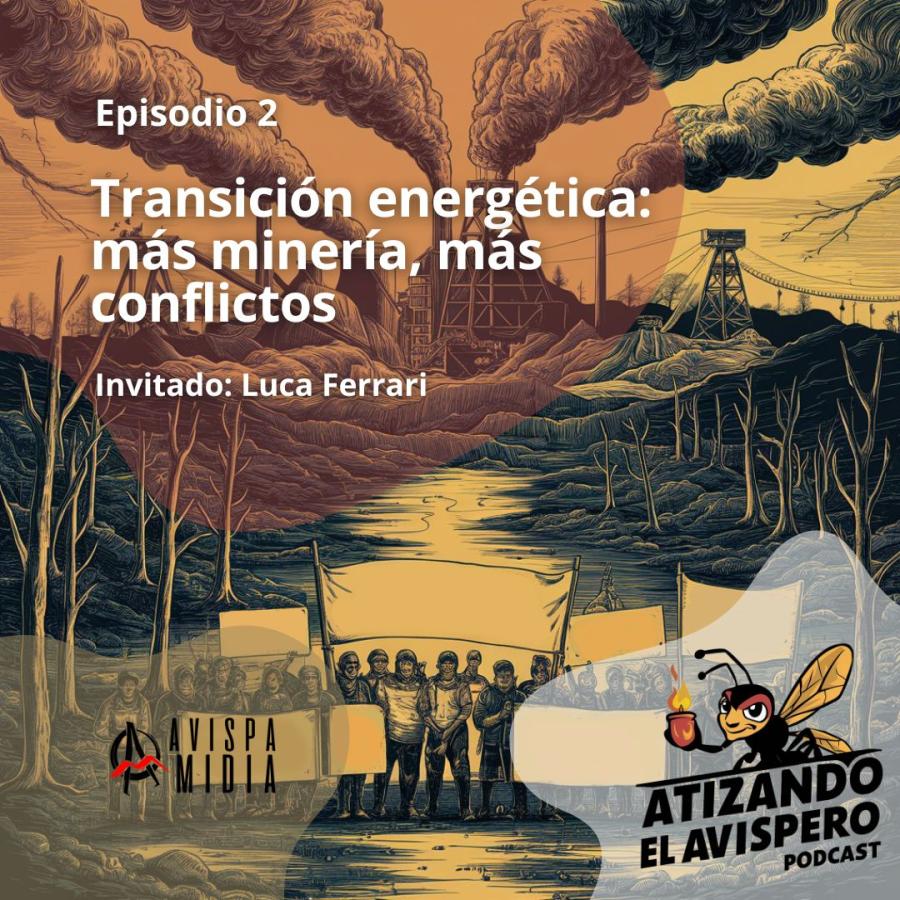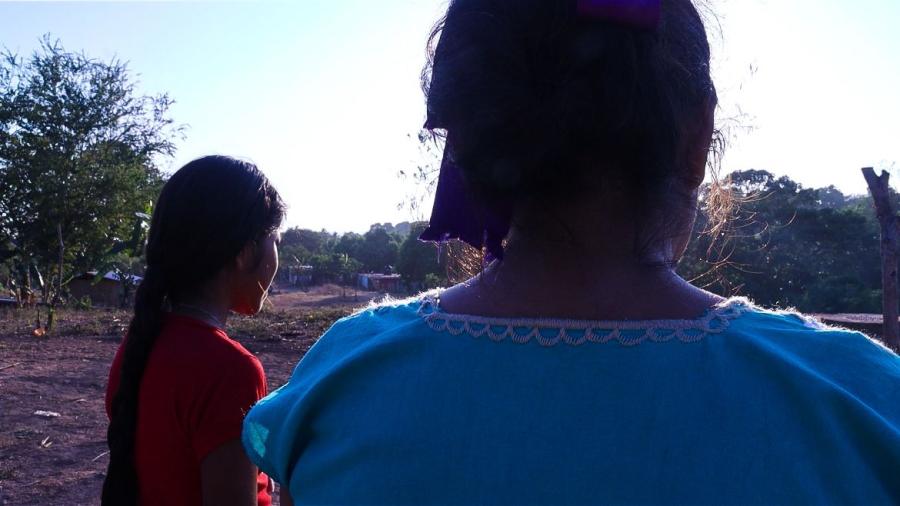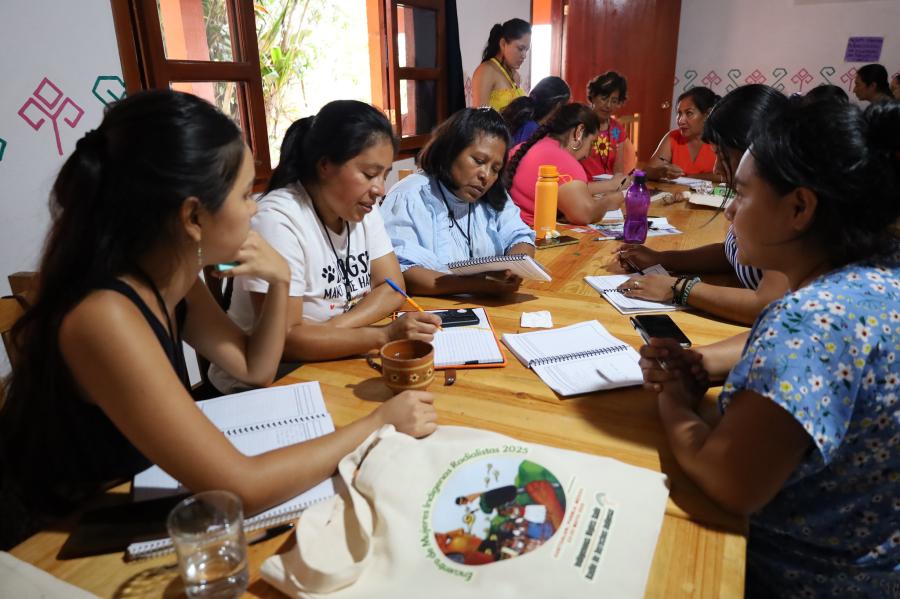From 1915 to 1920, while Emiliano Zapata and his peasant army were defending the lands of the Indian and peasant communities of Morelos from the latest effort of the sugar plantations to wipe them off the map, another army was fighting in Chiapas, 1000 km to the south. This army, known as the mapaches (raccoons), for their reputation for raiding fresh ears from Indian corn fields, was not a Zapatista army. In fact, no known Zapatista movement was initiated in Chiapas during the Mexican Revolution. The mapaches represented other interests; their primary goal was to squelch any inkling of an idea of land reform Chiapas' Maya Indians might have conceived from the example of areas such as Morelos.
Not only did the mapaches commit tremendous atrocities against the Indians, they created huge land holdings - as large as 8,00 to 10,000 hectares - of what little good land still remained to the Indian communities. In Cancuc they summarily hung 500 men in the church (practically the entire adult male population of the township) as suspected rebels. Coincidentally, mapache officers received ranches carved out of Cancuc's communal lands. Many of the mapache-consolidated landholdings are still intact in Chiapas.
In 1916, the federal army of President Venustiano Carranza entered Chiapas to apply a watered-down version of land reform (which the Zapatistas opposed) and to abolish debt peonage. As in other parts of the country, the carrancistas also committed atrocities and tended to use land reform as an excuse to take over ranches for themselves, rather than return them to the Indians. The mapache army, with heroism still celebrated by Chiapas rachers, successfully resisted the carrancista invasion. In 1920, when Alvaro Obregon deposed the carrancistas, the mapaches opportunely offered their recognition to the new government in return for a retreat of the federal army. Obregon, needing support in this critical moment, accepted and the landlords remained in power and in possession of Chiapas' productive land.
When President Lazaro Cardenas instituted true land reform nearly 20 years later, the ranchers circumvented it by dividing their estates into units under the minimum (500 hectares for pasture land), distributing ownership among family members and employees. Thus, Chiapas' Indian communities received minimal benefits from Cardenas' agrarian policy. In 1993, ranches in Ocosingo still had debt peonage, and members of some Indian ejidos have to walk over two hours through fertile, flat ranch lands to get to the pile of rocks they received from the land reform program to plant their cornfields. In 1916, some 8,000 private holders controlled nearly 3,00,000 hectares, practically all of Chiapas good quality land. By 1993, the number of private owners of that good land was reduced to 6,000. Meanwhile, Chiapas' Indian population had grown over ten times to nearly 2,000,000.
In the fertile valleys above the Selva Lacandona in eastern Chiapas, by the 1950s, the growth of the Indian population had become a problem. The ranches had their quota of debt peonage and the extra sons and daughters of the peasant serfs had no place to go, creating a potentially explosive social situation. To remedy this problem, the government - still refusing to apply Article 27 of the Constitution of 1917 that guaranteed land reform - initiated a program of agrarian colonization in the Lacandon rainforest. This area had been evacuated by the Spaniards in the 16th century and the descendants of the original inhabitants had never returned. The government program formed many colonies, but never gave them clear land titles. Some colonies have waited over 40 years without receiving their land titles.
Land was soon occupied nonetheless, especially after the government began sending landless peasants from other states besides Chiapas. Incredibly poor planning and insufficient support of these colonization projects resulted in widespread destruction of rainforest resources with little benefit for the Indian colonists. The final waves of Indian immigration found that there was no more land to be distributed; but with nowhere else to go, they remained as agricultural labor for their somewhat more fortunate comrades.
Work was scarce, however, because government promises of roads, clinics, schools, and technical assistance were not kept. Even with land, Indians found they had no feasible market for their goods, and therefore little money to pay workers. As the population grew, so did the misery of its living conditions. Petitions for government aid went unheeded. Indians began to form organizations independently of the government to seek solutions for their problems. Cooperatives were formed to export organic products, for example, and political alliances arose to seek new pressure points within the government. However, these efforts were met with direct and brutal repression. Attempts to achieve reforms through the local electoral processes were responded to even more severely. The instrument of this repression was the private army of the landholders, now known as guardias blancas ("white guards"), direct descendants of the mapaches. The difference is, according to Indian spokesmen, that these new mapaches are armed and trained by the Mexican federal army.
Desperation increased with the reforms put in place by the Salinas regime in 1992. Modifications to Article 27 of the constitution ended land redistribution once and for all. Worse, new loopholes were opened, allowing legal land concentrations of up to 300,000 hectares in the hands of a single corporation. Further reforms directed towards preparing the way for free trade with the US were even more discouraging. The Salinas government agreed to end protection of Mexico's small farmers from international dumping of agricultural products. Corn prices, for example, would gradually descend to the international level determined by US exports. American farmers receive government export subsidies for their corn, so this move would assure the ruin of Mexico's unsubsidized Indian producers. Complaints about this policy were met with cynical statements by the Salinas administration technocrats that Indian farmers are just too inefficient to compete with their US counterparts. Actually, in a truly free market the opposite would probably be the case.
Indians were devastated by these and other NAFTA-related policies. The problem is not free trade; Indians would probably benefit from measures that opened the North American market to the wide variety of products originating from their agriculture, forestry, and handicraft activities. Their problems originate in collateral policies of the Salinas administration that apparently see no future for Indians in modern Mexico and that implement measures to hasten their supposedly inevitable demise.
During the past few years, Chiapas' ranchers, inflamed by the government's reforms and the prospect of the Free Trade Agreement, hatched a new scheme. They would create a new beef emporium by expanding into the Lacandon region, backed by US investors. There was only one minor detail: thousands of Indians had to be moved out of the way to free up the new lands. Though it is unlikely that any US investors were ever actually interested in such a project, the ranchers discussed it openly in the bulletin of the local cattlemen's association and, not so openly, the guardias blancas increased their harassment of Indian settlements.
The increasingly desperate situation of Indian communities was recognized by many in government and in the international community. During President Salinas' administration, large sums of money from the World Bank and from the Federal budget were made available for agriculture, health and social programs in the State. However, the ranchers, merchants and others of the hard line oligarchy of the state refused to apply these funds. Statistics show that of the funds available in this administration for different categories of agricultural development, only 15 to 20% was exercised. The local government, controlled by the same mapache oligarchy, refused to channel funds to Indian communities and organizations.
The Salinas administration's star social program "Solidarity" spent more money in Chiapas than any other state, but the funds never reached needy Indian cooperatives and businesses. This program was based on the same assumption mentioned above, that Indians really have no future. Spending was seen as a stopgap to ease social pressure while Indians abandoned the land to migrate north. And the funds were divided up according to the spoils system by the local political bosses.
In the face of increasing aggression and the clear decision of the government to abandon support of Indian land claims, added to the failure of legal political efforts to provide solutions, Indians began arming themselves to defend against the attacks of the mapaches. They began to discuss the prospect of armed rebellion, and the issue seriously divided Indian communities and their organizations. However, many thousands of Indians opted for armed struggle, and this group dramatically announced its presence to the world on January 1, 1994.
Two remarkable facts characterize the new Zapatista army. Before January 1st, even those close to Indian organizations in Chiapas had little inkling of its existence and no idea of its magnitude. Secondly, perhaps no other insurgent movement has provided more information more quickly and effectively to the press - national and international - about its goals and operations. In a matter of days it became clear that the Ejercito Zapatista de Liberacion Nacional (EZLN) was composed of thousands of Mexican Indians (not foreigners), was organized along democratic lines characteristic of other Indian organizations, and had a clearly defined political program for Chiapas and the country. This program is strikingly similar to the demands presented by the original Zapatista army in 1915: land to work and political democracy so that benefit from that work accrues to the Indians, not to the caciques (political bosses) - Tierra y Libertad!
At this writing, the initial phase of a dialogue for peace has concluded and the government's responses to Indian demands are being discussed by the communities in Zapatista-controlled territory. Meanwhile the movement has rocked the entire country to its foundations. In particular, Indian organizations from all over Mexico are mobilizing to demand fundamental democratic and social reforms, with the support of nearly all sectors of society. Indians were considered a minor problem by the Salinas administration, soon to be eliminated by NAFTA and economic progress. Once again, Indians have surprised those who predict their imminent demise to become the political vanguard of the country, provoking profound changes in Mexican society at all levels.
Article copyright Cultural Survival, Inc.



